Review of Sergei Eisenstein: Vol One
Introduction
Until 1907, when the Drankov production company was set up, Russia had no domestic film industry. The import of foreign films all but ended when World War One broke out and there was a boom of Russian film companies by 1917. The revolution in October of that year changed the face of Russian cinema forever, as it led to an exodus of filmmakers and actors and the birth of Soviet cinema. Lenin`s Bolshevik government saw the propaganda potential of film and reconstructed the film industry as part of the State Department of Education. Battling post-war shortages and the private sector, the Soviet film industry`s output was minimal, until the early 1920s when the economy had recovered and film stock and equipment were more readily available. Amongst this revival came such directors as Vsevolod Podovkin, Alexander Dovzhenko and Sergei Eisenstein. The three made films at an astonishing rate, but the best known is the work of Eisenstein, with his first three films, known as the `Revolution Trilogy`, which make up this box set.
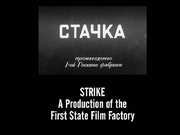
STRIKE
Made in 1925, when Eisenstein was just 26, `Strike` recreates the events surrounding a strike in a factory in 1912, which is sparked by the suicide of a worker accused of theft. The striking workers table a list of demands which are briefly considered before being rejected by the management. As the factory stays closed and financial pressures on the owners mount, they start bribing starving workers with vodka to return to work, but the strike continues and, eventually, mounted troops are sent in - with tragic consequences.
Eisenstein`s first feature-length film is a work of extreme ambition and brilliance, with the final sequence showing the dialectical montage editing that is such a feature of this trilogy. He uses quick cuts between the violence of the military towards the workers and the slaughter of a bull, to shocking effect. Not the finest film in Eisenstein`s oeuvre, but a stunning debut, a brilliant technical achievement and a skillful piece of agitprop cinema.

BATTLESHIP POTEMKIN
After the success of `Strike`, the Soviet Central Committee commissioned Eisenstein to make a film commemorating the twentieth anniversary of the failed 1905 Revolution. Rather than chronicle the whole Revolution attempt, Eisenstein chose to use the mutiny on the titular warship as a metaphor. Beginning on board the Battleship Potemkin, where the sailors, led by Vakulinchuk, refuse to eat meat which is crawling with maggots. A group of sailors are rounded up to be shot, but the mass execution fails when the marines refuse to shoot their comrades and, in the ensuing mutiny, Vakulinchuk is killed by an officer. His body is taken to the port of Odessa where he becomes a martyr, fanning the flames of revolutionary fervour. When the Potemkin, now a mutiny ship under the sailors` control, docks at Odessa, they are greeted as heroes and the scene is set for the famous `Odessa Steps` sequence, where the Tsar`s soldiers open fire on the unarmed crowd.
Although the entire film is a gripping and superbly made piece of silent cinema, `Battleship Potemkin` is largely (and unsurprisingly) known for the `Odessa Steps` chapter. Eisenstein`s editing is phenomenal as he cuts quickly between disparate images, expanding this single event to represent the whole Revolution in a stunning sequence that is one of the most famous and highly regarded in the history of cinema. `Battleship Potemkin` is a masterpiece of silent cinema.
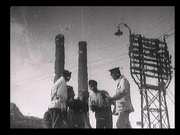
OCTOBER
Sergei Eisenstein was commissioned by the Jubilee Committee to make a film celebrating the tenth anniversary of the 1917 Revolution. `October` reconstructs the events in the eight months of 1917 that would lead to the overthrow of the Tsar and the formation of the Bolshevik government. Using the techniques that served him so well in `Strike` and `Battleship Potemkin`, Eisenstein employs fast dialectical editing and tells the story through montage and metaphor. From the overthrow of the Tsar in February, to the dissolution of the Provisional Government in October, this documentary style film is largely faithful to known historical facts. Following Trotsky`s expulsion from the party in 1927, politics dictated that his role in the film was significantly reduced and, due to this internal wrangling and the necessary re-editing, `October` was not released until March 1928.
A superb technical achievement, Eisenstein`s outstanding editing and filming techniques arguably confused the audiences of the day, causing the party leadership to rule that filmmakers should cease being formalist and concentrate more on content-driven, accessible films.
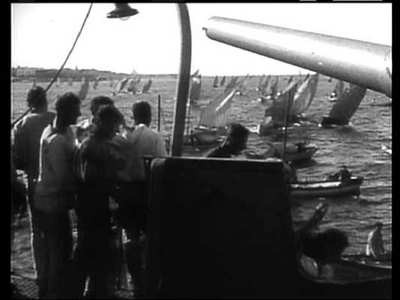
Video
Considering the films are around 80 years old, `Strike` and `Battleship Potemkin` look very good, with remastered transfers and new, clear and easy to read intertitles. `October` has the original print and subtitled intertitles, which are white without a black outline, so are impossible to read on very light backgrounds.
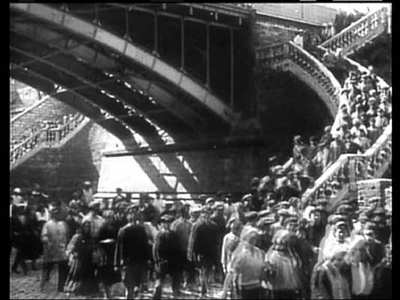
Audio
`Strike` and `Battleship Potemkin` have newly conceived scores composed by Ed Hughes and performed by The New Music Players. They are presented in Dolby Digital and DTS 5.1 and DD 2.0 Stereo and are completely different to the original compositions. The sound quality is great, but I`m not overly keen on Ed Hughes` loud and bombastic score. On the same disc, there is the option to watch `Battleship Potemkin` with Nikolai Kryukov`s 1950 score, but the picture has not been remastered and the older intertitles remain.
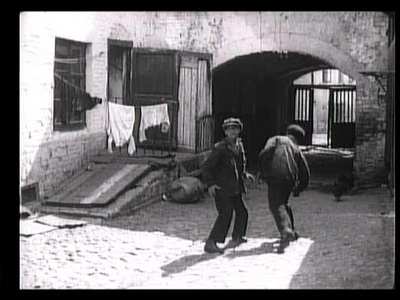
Features
The main extra feature is `Behind The Scenes` footage of the new soundtrack recording sessions and lasts about 7 minutes. Conductor Patrick Bailey talks about The New Music Players, the new score and Eisenstein`s approach to music in his films.
The `October` disc also includes `Battleship Potemkin` with the excellent original score by Edmund Meisel (although on the menu he is called `Edward`) which means you can watch `Battleship Potemkin` with three different scores and intertitles.
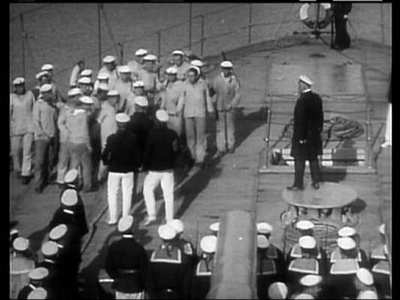
Conclusion
Before propaganda became a negative term, it meant purely to distribute information on a mass scale. In the case of these films, they are early examples of the state using a talented filmmaker to disseminate approved information. Common to all three films is the lack of a single protagonist, instead the proletariat is the hero, acting as one person for the glory of the Revolution.
Chances are you`ll already know whether you`re interested in this box set or not - silent cinema is a niche market, and foreign silent cinema even smaller. If you appreciate Eisenstein`s work, then this is one for you.
Your Opinions and Comments
Be the first to post a comment!